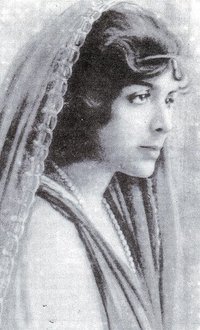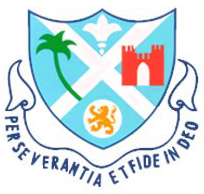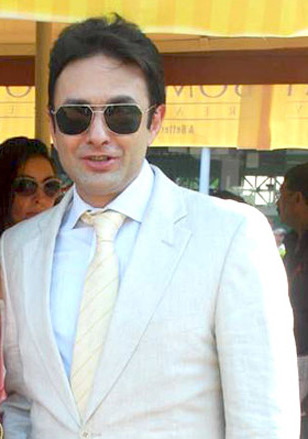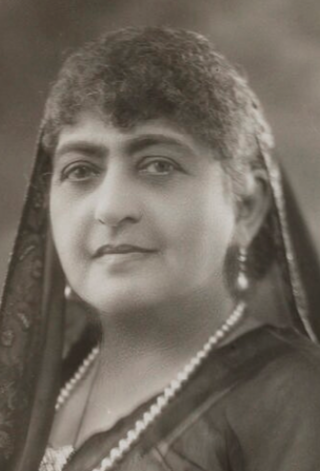
Rattanbai Jinnah or Maryam Jinnah (legally)(néePetit; 20 February 1900 – 20 February 1929), also known as Ruttie Petit, was the wife of Muhammad Ali Jinnah, an important figure in the creation of Pakistan and the country's founder.

Dina Wadia was the only child and daughter of Muhammad Ali Jinnah, the founding father of Pakistan, and Rattanbai Petit.

Nusli Neville Wadia is an Indian billionaire businessman and the chairman of the Wadia Group, an Indian conglomerate involved in the FMCG, textiles, and real estate industries, among others. His net worth was estimated at US$4.4 billion by Forbes in August 2024.
The Wadia family is a Parsi family from Surat, India, currently based in Mumbai, India. The family rose to wealth in the mid-1700s as shipbuilders serving the British East India Company as the latter established its sway over India.
Ratanji Dadabhoy Tata (1856–1926) was an Indian businessman who played a pivotal role in the growth of the Tata Group in India. He was the cousin of Jamsetji Tata and one of the partners in "Tata Sons" founded by Jamsetji Tata. Ratanji was the father of renowned J. R. D. Tata.
Bombay Dyeing & Manufacturing Company Limited is an Indian textile company headquartered in Mumbai, India. It operates as a subsidiary of the Wadia Group and is one of India's largest producers of textiles.

The Bombay Scottish School, Mahim, popularly known as Scottish, is a private, Christian co-educational day school located at Mahim West in Mumbai, India. The institution was established in 1847 by Scottish Christian missionaries under the name Scottish Female Orphanage. Bombay Scottish School, Powai is an affiliate of this institution.

Campion School is a private Catholic primary and secondary school for boys located at 13 Cooperage Road, Mumbai, in the state of Maharashtra, India. Established in 1943 by Jesuit Fr. Joseph Savall, the school is named in honour of Saint Edmund Campion, a 16th-century English Roman Catholic martyr.

The Petit Baronetcy, of Petit Hall on the Island of Bombay, is a title in the Baronetage of the United Kingdom. It was created on 1 September 1890 for the Indian entrepreneur and philanthropist Dinshaw Maneckji Petit.

Ness Nusli Wadia is an Indian businessman. Wadia is the managing director of Bombay Burmah Trading Corporation, a company which has holdings in most of the Wadia Group subsidiaries, including an indirect majority stake in Britannia Industries. He was the Joint Managing Director of Bombay Dyeing, the flagship company of the Wadia Group, till March 2011 when he stepped down from the post. Wadia is a co-owner of the Indian Premier League cricket team Punjab Kings.
Jehangir Nusli Wadia, also known as Jeh Wadia, is an Indian businessman, who was the Managing Director of Go First, Bombay Dyeing and Bombay Realty. He was also a Director on the Boards of Britannia Industries, The Bombay Burmah Trading Corp. Ltd, Wadia Techno – Engineering Services Limited & others.
The Queen Mary School, is a private school for girls in Grant road, Mumbai, India. It was founded in 1875, It operates under the management of Christian Medical Educational Fellowship (C.M.E.F) Trust and is affiliated to Indian Certificate of Secondary Education (I.C.S.E) Board. Notable alumni include Maniben Patel.

Jehangir Sabavala was an Indian painter.
Nadir Burjorji Godrej is an Indian chemical engineer, industrialist and member of the Godrej family. He is managing director of Godrej Industries, one of India's biggest businesses, and as chairman of Godrej Agrovet.
Burjor Khurshedji Karanjia was an Indian film journalist and editor. He was the editor of Filmfare for 18 years, followed by Screen which he edited for 10 years. He also remained the chairman of the National Film Development Corporation of India (NFDC).

Dhunbai Cowasji Jehangir was an Indian philanthropist and leader of women's organizations, based in Bombay.












